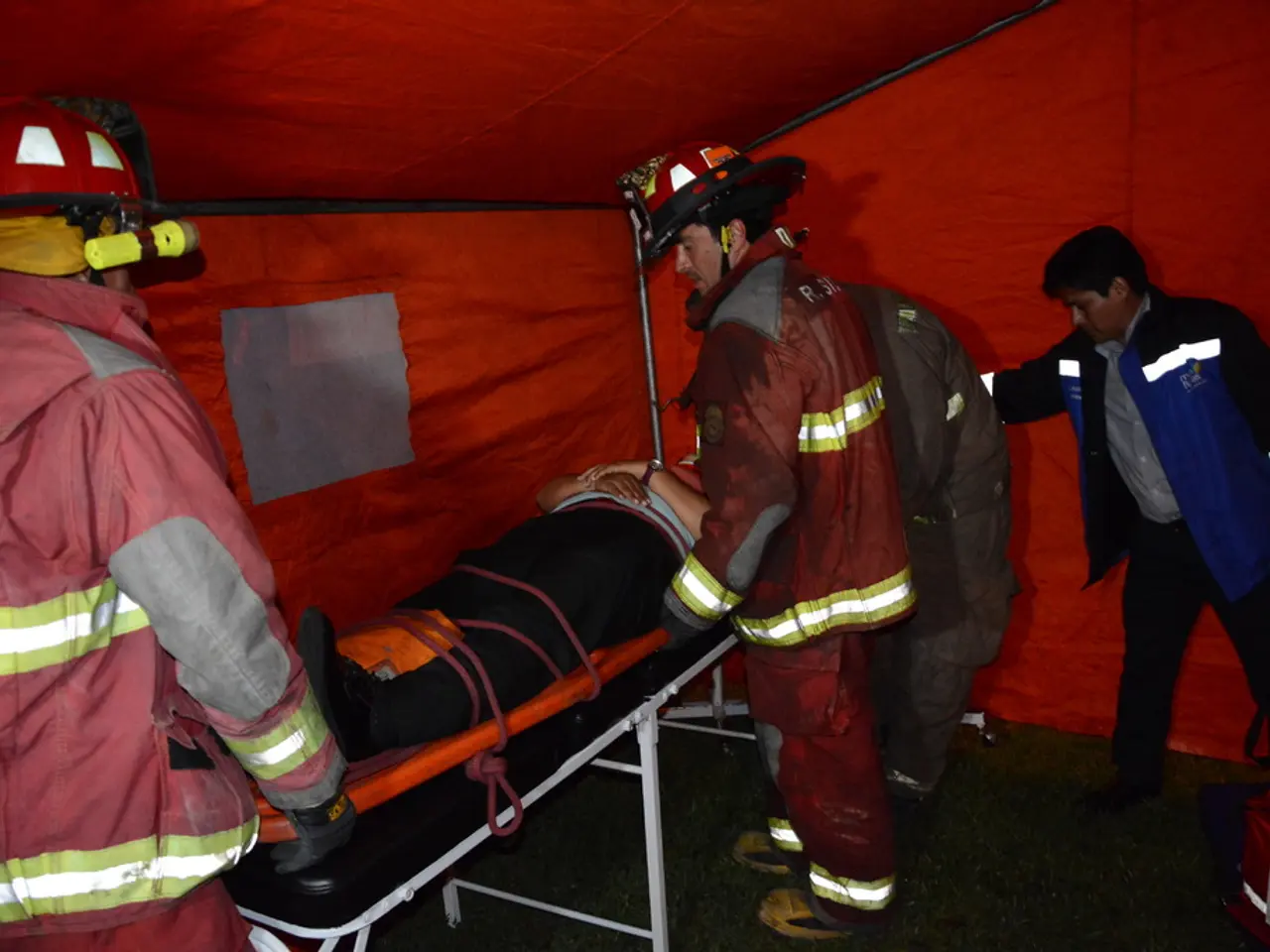Engineered Bionic Knee Directly Integrates with Skeletal Structure and Nervous System, Providing a Biologically Authentic Experience
**Revolutionary Bionic Knee Restores Natural Movement and Sensation for Amputees**
A groundbreaking development in the field of prosthetics has been unveiled by MIT researchers, with the creation of the Osseointegrated Mechanoneural Prosthesis (OMP). This innovative system, designed for above-knee amputees, promises to revolutionise lower-limb prosthetics by providing bionic limbs that not only move but also feel more like natural legs.
The OMP system is unique in its ability to directly link the prosthetic knee to the body's muscles, nerves, and bone, offering a dynamic range of natural leg movements and sensory feedback previously unavailable with traditional prostheses.
Key features of the OMP include a bone-anchored titanium implant, agonist-antagonist myoneural interfaces (AMI), and neuromuscular control with implanted neural interfaces. The titanium rod, surgically implanted directly into the femur bone at the site of amputation, provides superior mechanical stability and support, reducing discomfort and common skin issues.
AMI surgical modifications replicate natural muscle pair interactions, allowing the prosthesis to receive fine-tuned electrical signals from residual muscles. This enables more fluid, adaptive, and intuitive control of the prosthetic knee while reestablishing proprioception, or a sense of limb position and movement.
Neuromuscular control with implanted neural interfaces facilitates precise electrical communication between the user's nervous system and the robotic controller of the prosthetic knee, allowing for real-time, naturalistic knee motions such as walking on uneven terrain, climbing stairs, and sit-to-stand transitions.
In clinical trials with two above-knee amputees, users demonstrated superior performance in walking speed, knee bending to specific angles, obstacle negotiation, and stair climbing compared both to individuals with AMI alone and to those with traditional prostheses. Users also reported a greater feeling that the prosthesis was integrated into their body, reducing the perception of it as an external device.
While the early results are promising, further large-scale clinical trials are planned to secure FDA approval, which may take approximately five years. Experts regard this tissue-integrated approach as a major milestone toward restoring natural leg function in amputees and improving rehabilitation outcomes.
The OMP could mark a turning point in bionics, a field that has long promised lifelike prosthetics but often failed to match the human body's complexity. The innovation's potential to reshape how prosthetics are designed, moving towards fully integrated body systems, is significant.
The study, published in the journal Science, involved 17 participants, with two having both AMI surgery and the e-OPRA bone implant, eight having AMI alone, and seven having neither. The OMP makes use of a surgical technique known as the agonist-antagonist myoneuronal interface (AMI), which helps reconnect muscle pairs in the residual limb to improve communication with a bionic knee.
The titanium implant in the OMP houses 16 wires connected to electrodes embedded in the AMI muscles. The custom-built robotic controller calculates how much torque is needed to move the knee based on neural signals collected by the electrodes. This not only restores internal feedback to the brain, helping users feel their muscles again, but also creates a reliable stream of electrical signals that can be used to control a robotic limb.
In conclusion, the MIT-developed OMP combines osseointegration, advanced muscle interface surgery, and neuromuscular engineering to provide above-knee amputees with bionic limbs that move and feel more like natural legs, representing one of the most significant innovations in lower-limb prosthetics as of 2025.
- This revolutionary Osseointegrated Mechanoneural Prosthesis (OMP) is a groundbreaking development in the field of science, particularly in the subfields of prosthetics and robotics.
- The OMP is an innovative system that directly links the prosthetic knee to the body's muscles, nerves, and bone, making it a significant innovation in tech and technology.
- The development of the OMP has potential implications for various medical-conditions, specifically for individuals with health-and-wellness issues related to amputation.
- With its ability to provide natural leg movements and sensory feedback, the OMP could revolutionise the future of research in medicine and biology.
- The OMP's unique design and features, including advanced muscle interfaces and neuro-muscular control, represent a significant step towards innovation in health-and-wellness and health technology.
- The potential of the OMP to reshape prosthetic design and move towards fully integrated body systems is a significant development in the field of science and technology.
- The OMP's ability to restore natural leg function in amputees and improve rehabilitation outcomes could have a profound impact on the future of technology and health-and-wellness.




